

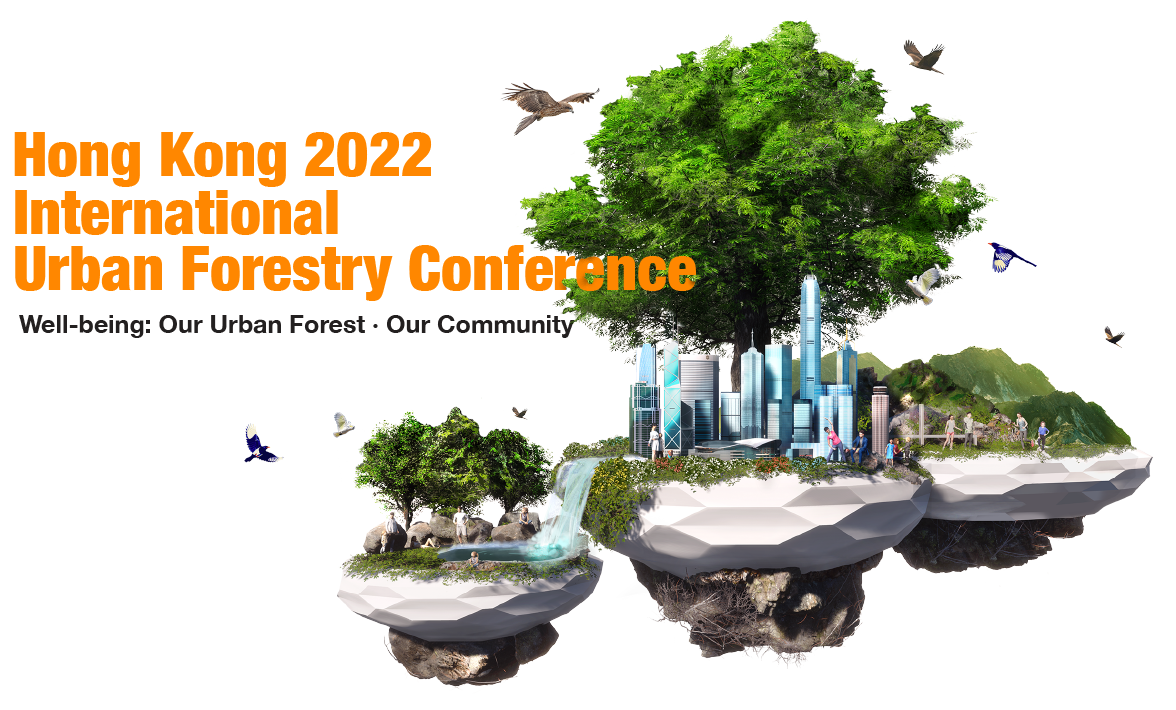
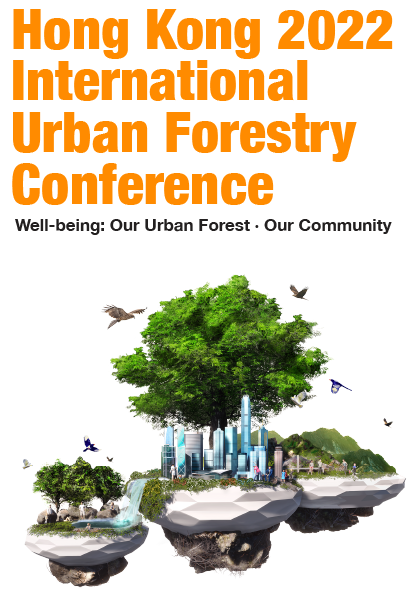


- Attention ISA members, this Conference qualifies for CEUs.
- Attention HKIUD members, this Conference qualifies for CPD points.
- Attention HKIE members, this Conference is recommended for CPD hours.
- Attention HKILA members, this Conference qualifies for CPD points.
- Attention HKIQEP members, this Conference qualifies for CPD points.
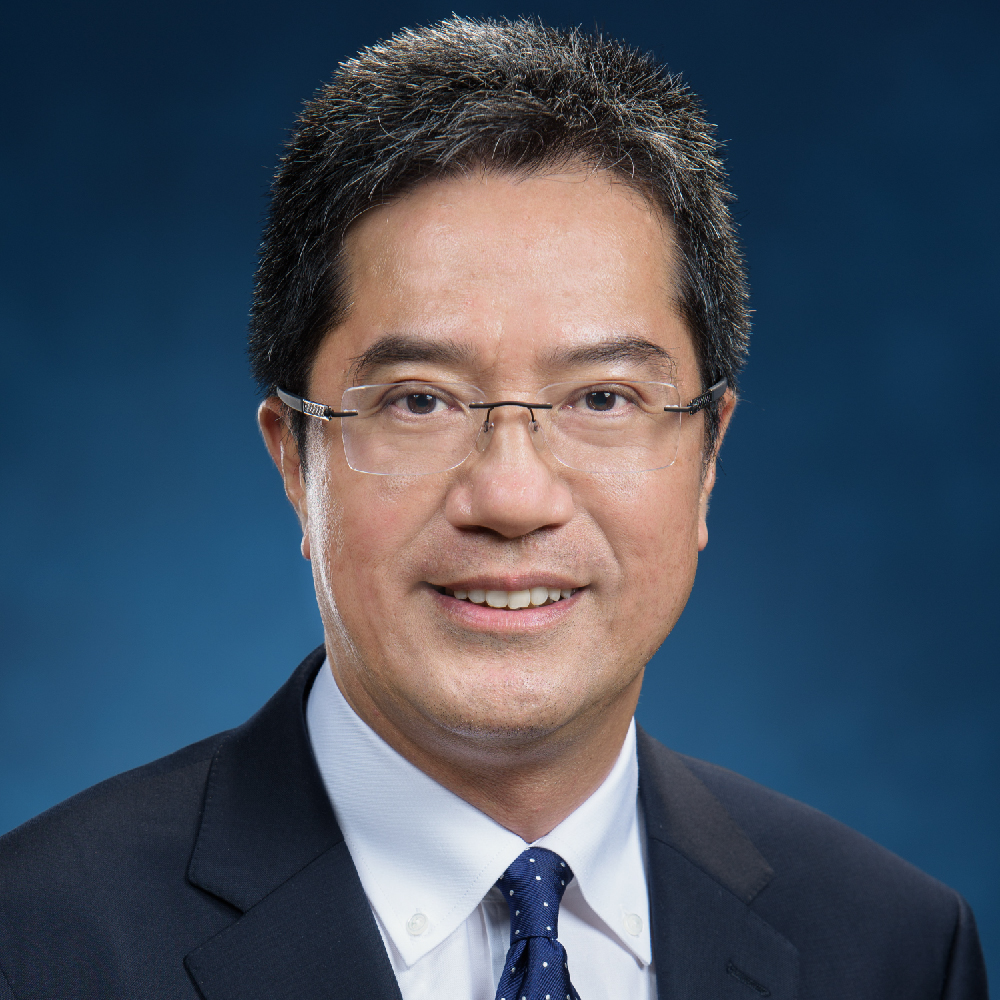
WONG Wai-lun, Michael, JP
Former Secretary for Development
(02/07/2017 - 26/06/2022)
I am pleased to welcome you to the Hong Kong 2022 International Urban Forestry Conference, its second edition organised by the Development Bureau of the HKSAR Government. This year, the Conference has put together a comprehensive and exciting programme over two full days covering topics of common interest among government officials, professionals, academics and practitioners in arboriculture, urban forestry and related fields around the globe.
The theme of this year's Conference, "Well-being: Our Urban Forest‧Our Community" is a very timely choice for all of us, who have been besieged by the pandemic in the past two years. The Conference will explore subjects ranging from the urban forestry in infrastructure planning and design, its relationship with the wellness and the health of people, and its sustainable management via a mix of formats including talks, panel discussions to virtual booth exhibitions. I am also excited to share a breakthrough of this year Conference that a Greater Bay Area session will be hosted to manifest our concerted effort in building more liveable cities in the southern part of the Chinese Mainland.
I am grateful to the Organising Committee for providing valuable advice in the making of this fabulous platform for renowned international experts, decision-makers, academics and industry professionals to share experience, exchange best practices on urban forestry management and renew ties with one another despite the difficult circumstances. My gratitude also extends to all our supporting organisations and Government departments for their generous support.
I wish you all the best of business and a healthy and rewarding year to come.
Programme
 Session 1:
Session 1:
 Session 2:
Session 2:
*Remarks
Co-presented by:
Professor WANG Cheng
Dr LI Zhiqi
Dr DONG Hui
 Session 3:
Session 3:
Health and Well-being
 Session 4:
Session 4:
In light of the latest COVID-19 development, the Technical Sessions on 4 March 2022 will be postponed as the safety of participants and staff must always come first. Details on further arrangement will be announced in due course.
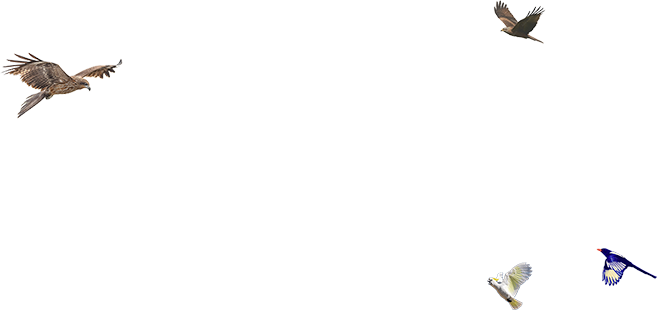
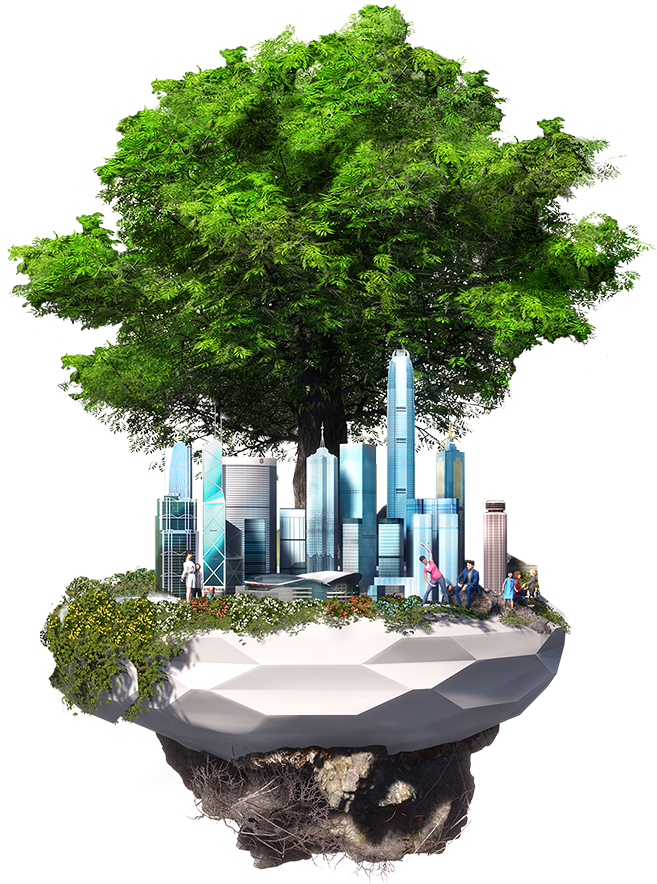
Speakers' permissions have been obtained for the available speakers' materials for viewing, in the original language used by the speakers at the conference.
Session 1: Well-being Cities
Opening Ceremony
2 March 2022 WednesdaySession 1: Well-being Cities
Urban Nature and Its Health Relevance
2 March 2022 WednesdayThe majority of the global population already lives in cities, with urbanization steadily increasing. Urban living limits access to nature and can increase exposure to certain environmental hazards, such as air and noise pollution. Many urban areas face increasing pressure from expanding populations, limited resources and growing impacts of climate change. These challenges must be addressed in order for cities to provide healthy and sustainable living environments.
Green and blue spaces and other nature-based solutions offer innovative approaches to increase the quality of urban settings, enhance local resilience and promote sustainable lifestyles, improving both the health and the well-being of urban residents. Parks, playgrounds or vegetation as well as water bodies in public and private places are a central component of these approaches and can help to ensure that:
- urban residents have adequate opportunities for exposure to nature;
- urban biodiversity is maintained and protected;
- environmental hazards such as air pollution or noise are reduced;
- the impacts of extreme weather events (heatwaves, extreme rainfall or flooding) are mitigated;
- the quality of urban living is enhanced;
- the health and well-being of residents is improved through stress alleviation and relaxation, physical activity, improved social interaction and community cohesiveness.
Urban nature is an important part of public open spaces and common services provided by a city and can serve as a health-promoting setting for all members of the urban community. It is therefore necessary to ensure that public green and blue spaces are easily accessible for all population groups and distributed equitably within the city. Everyone can benefit from urban interventions towards more nature, but such interventions can be of particular relevance for socially disadvantaged or underserved community groups, which often have least access to high-quality nature spaces.
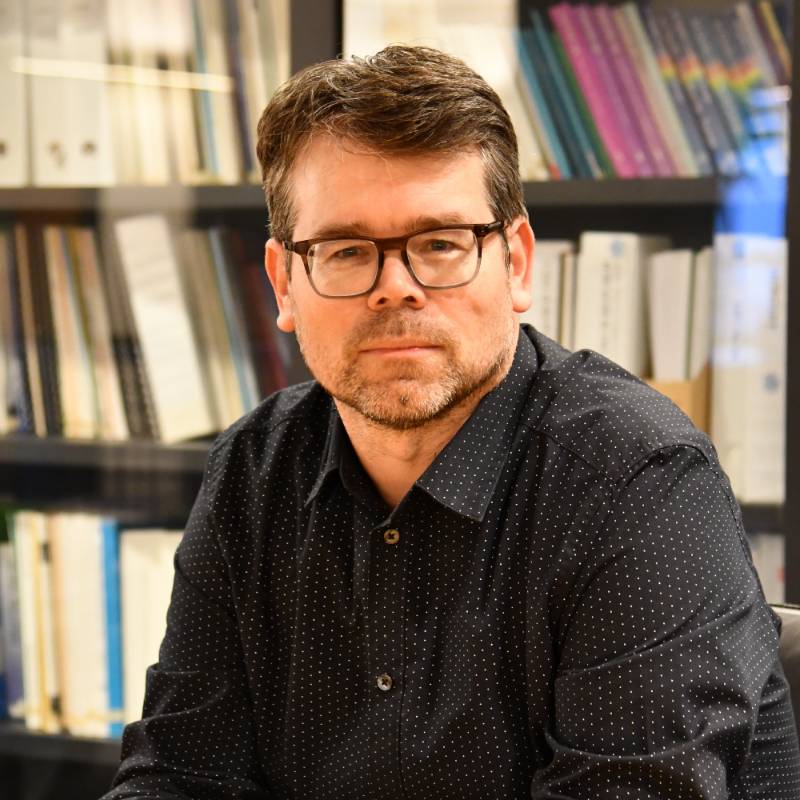
Mr Matthias BRAUBACH
Technical Officer of Urban Health Equity, World Health Organisation European Centre for Environment and HealthSession 1: Well-being Cities
City in a Forest: The Vision of Biophilic Cities
2 March 2022 WednesdayThis presentation will introduce the vision, practice and global movement of Biophilic Cities, and consider especially the essential role of trees and urban forests. With biophilia, our innate love of and need for connection with nature, at the core, Biophilic Cities is a new approach to global urbanization that puts nature at the center of design and planning. Beatley will describe the key design attributes and planning principles that underpin the vision and discuss the ways that nature education fits in. He will discuss the global Biophilic Cities Network and specifically the creative ways that partner cities in the Network are protecting, growing and celebrating trees and forests.
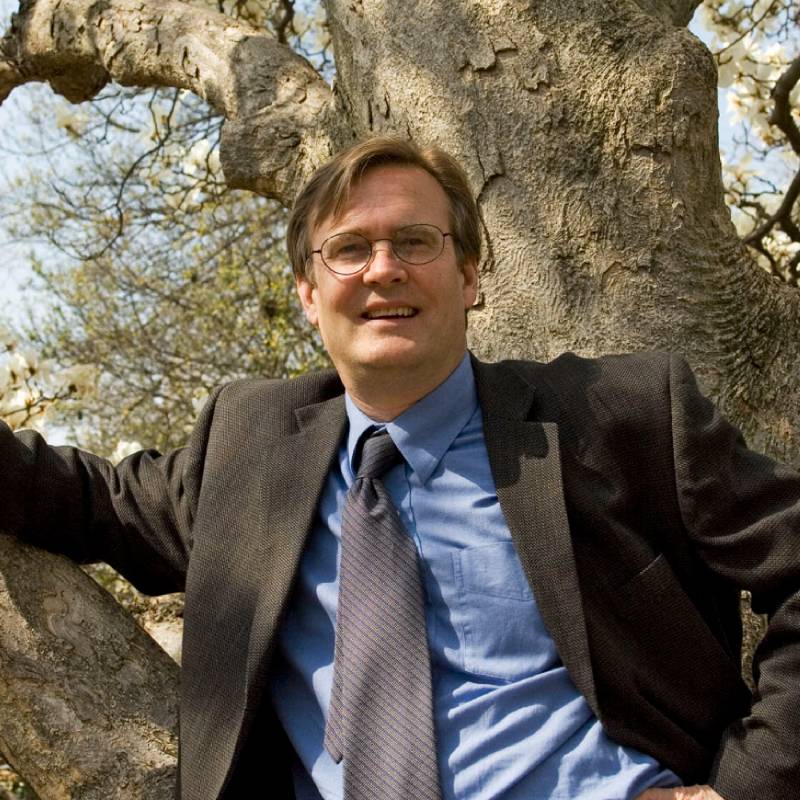
Professor Timothy BEATLEY
Teresa Heinz Professor of Sustainable Communities in the Department of Urban and Environmental Planning, School of Architecture, University of VirginiaSession 1: Well-being Cities
Break
2 March 2022 WednesdaySession 1: Well-being Cities
Healing the World's Cities: Sponge Cities and Sponge Planet Inspired by Ancient Wisdom
2 March 2022 WednesdayThe grey infrastructures made of steel and concrete, which we built to connect our physical world, are shallow or even fake constructs that are destroying the real and deep connections between human beings and nature, and among various natural processes and flows. The alternative is green infrastructure, or ecological infrastructure, the construction of which can be inspired by the ancient wisdom of peasantry. For the past twenty years, the author has tried to revive part of this peasantry wisdom, and combine it with modern sciences and technologies to solve some of the most annoying problems in today's urban environment, particularly around water. The solutions are simple, inexpensive, and beautiful and have been applied on a massive and extensive scale in over two hundred cities in China and beyond.
Meet the man behind the green transformation of China's cities. World-renowned landscape architect YU Kong-jian will show how nature based solutions such as sponge city are solving ecological problems while providing beautiful living spaces.
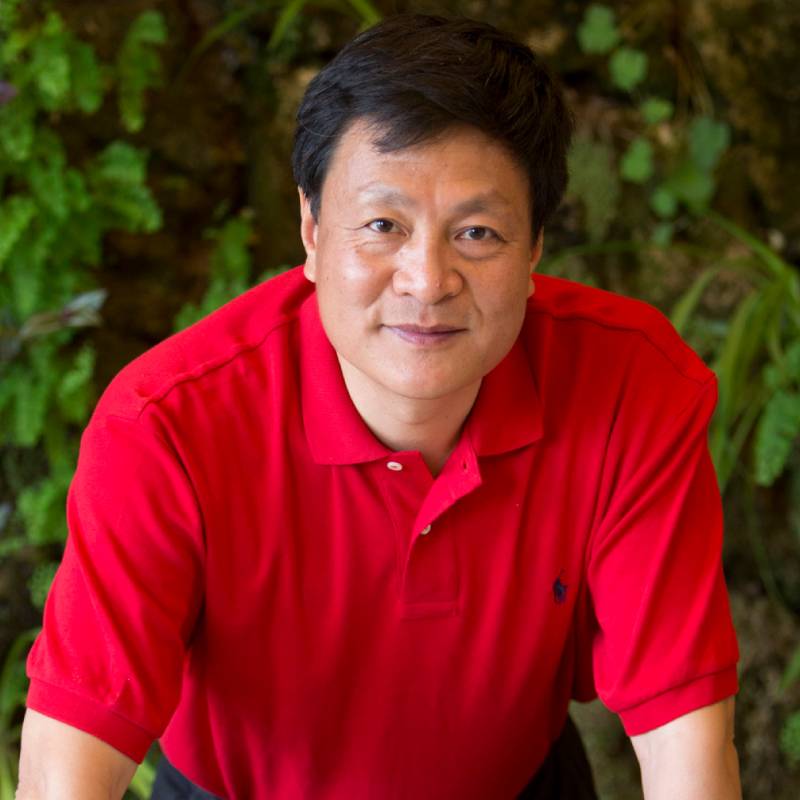
Professor YU Kong-jian
Professor of Landscape Architecture, Peking UniversityFounder and Principal Designer of Turenscape
Session 1: Well-being Cities
Re-greening Urban Riverscape: Shared Goal and Joint Effort in the Greater Bay Area
2 March 2022 WednesdayThe Guangdong-Hong Kong-Macau Greater Bay Area (GBA) is facing many challenges like climate change and ecological degradation. Urban riverscapes represent a critical zone where human society encounters natural environment. During the process of urban development, urban riverscape has been seriously modified: river stretches covered or channelized, river water polluted, and riparian vegetation cleared.
Re-greening and ecological restoration of urban riverscape, as a shared goal and joint effort across the GBA, hold the promise to bring valuable green-blue spaces back to urban society, create a livable and healthy urban environment, and enhance regional adaptability and resilience to climate change.
Serving as one of the study areas of an ongoing EU-China Strategic Collaboration Project (CLEARING HOUSE) co-funded by the European Union and China, Hong Kong, Shenzhen and Guangzhou have been collaborating to re-green and restore urban riverscape, via a joint effort in identifying appropriate vegetation, embedding Lingnan culture into riverscape design, engaging citizens to shape the priorities of science, policy, and practices. In this presentation, we will share best practices in re-greening urban rivers in these three neighboring cities and put forward future research/collaboration avenues towards a greener and more resilient GBA.

Dr Wendy Y CHEN
Associate Professor in the Department of Geography, University of Hong KongSession 1: Well-being Cities
Panel Discussion
2 March 2022 WednesdaySession 1: Well-being Cities
Noon Break
2 March 2022 WednesdaySession 2: Urban Forestry in the Greater Bay Area
Research on Wind Resistance of Landscape Trees and Practical Solutions
2 March 2022 WednesdayExploration of Factors Affecting the Typhoon-resistant Ability of Landscape Trees
Based on a large number of site surveys, visits and literature research, a summary of the damage caused by typhoons to landscape trees is made, upon which factors affecting the wind resistance of landscape trees are analysed.
Assessment on the Wind Resistance of Tree Species
Assessment on the wind resistance of tree species has been made and recommendations for species are made in descending order of wind resistance; evaluation of the wind-resistant properties of tree species has been done.
Practical solutions
Measures and methods for strengthening the wind resistance of landscape trees are suggested from three perspectives: planning and design; works implementation; and maintenance and management, emphasising that pruning management from the aspect of maintenance and management can significantly enhance the wind resistance of trees. Specific typhoon-resistant pruning guidelines have been formulated for 15 tree species that are prone to failure. A comprehensive summary of the suitability of all 16 types of tree grilles currently available under seven categories has been made, and recommendations are made with reference to landscape ratings.
Conclusion
The wind resistance of landscape trees is determined by a number of factors. Practically speaking, the wind resistance of trees can be strengthened in three aspects: (a) in planning and design, i.e. selecting the appropriate wind-resistant tree species and planting pattern for new vegetation landscape works in future, and reasonable planning of the spatial structure of green space, considering the site environment and its relevance to the nursery stock; (b) in implementing greening works, i.e. carefully monitoring the selection of nursery stock, planting, management and maintenance to guarantee quality planting processes; (c) in management and maintenance of greening, i.e. for newly planted and existing landscape trees, including root system cultivation, pruning, support, pest and disease control, etc., emphasising pruning and root system protection in maintenance work, and suggesting wind-resistant pruning methods for different tree forms and growth characteristics, provided that conditions for the healthy growth of trees are met.
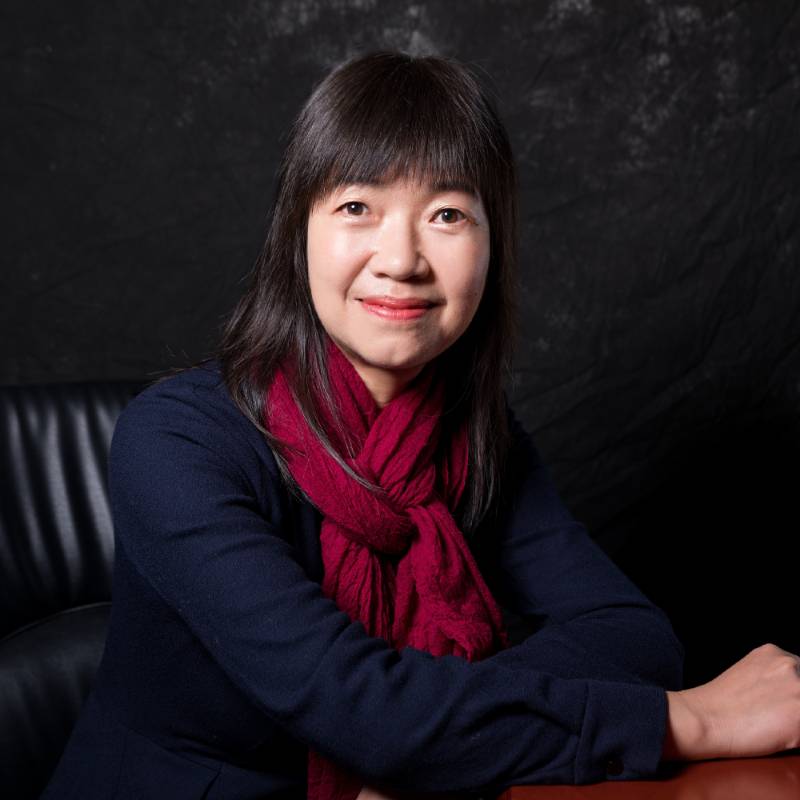
Professor XIAO Jieshu
Chief Landscape Architect in Shenzhen Beilinyuan Landscape and Construction Planning Design Institute Co. Ltd.Session 2: Urban Forestry in the Greater Bay Area
Engineering a Safer Urban Forest under Extreme Storms
2 March 2022 WednesdayUrban greening has been advocated in metropolitan cities worldwide, with the aim to restore ecosystems and ‘reclaim the natural environment' within the built environment (i.e. urban forest). Governments have invested billions of dollars in building urban forests. However, the increasing intensity of cyclones caused by environmental change has led to increasing numbers of tree failures. Existing methods of assessing urban tree risk rely on tree professionals' experience and visual assessment to identify potential above-ground problems such as deterioration due to brown root rot disease. However, problems below-ground such as uprooting that are invisible have not received much attention. Indeed, assessing tree root anchorage and stability when exposed to wind (i.e., wind-tree-soil interaction) is complex and requires cross-disciplinary investigation.
The presentation will share some latest research findings of tree stability from a collaborative project funded by the Hong Kong Research Grants Council. We view trees as a flexible structure subject to wind loading, a system that can be analysed quantitatively by using scientific approaches and engineering principles. We innovate the use of a range of cutting-edge technologies such as LiDAR scanning and 3-D prototyping to produce highly realistic and representative small-scale physical models of local tree species for testing. We will demonstrate the importance of taking into account the effects of soil-root interaction and root anchorage ability that have been ignored in existing assessment methods. We will also discuss the possibility of using yard waste-derived biochar to amend the urban soils and hence to improve root growth and root anchorage.
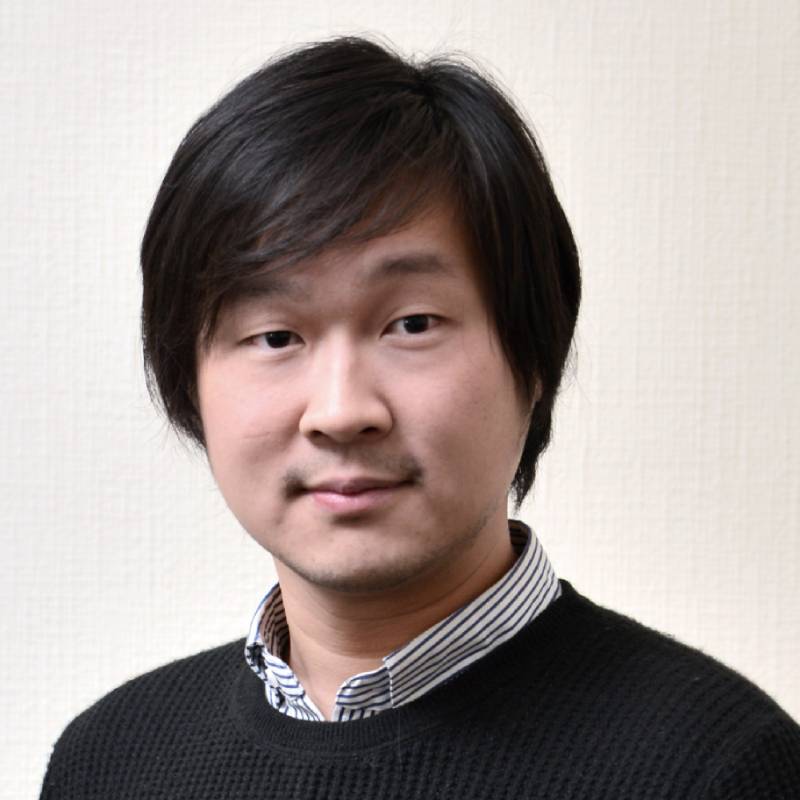
Dr Anthony LEUNG Kwan
Associate Professor in the Department of Civil and Environmental Engineering, Hong Kong University of Science and TechnologySession 2: Urban Forestry in the Greater Bay Area
Panel Discussion
2 March 2022 WednesdaySession 2: Urban Forestry in the Greater Bay Area
Break
2 March 2022 WednesdaySession 2: Urban Forestry in the Greater Bay Area
Identification and Control of Major Landscape Pests in South China
2 March 2022 WednesdayThis topic mainly deals with the methods for identifying and controlling major pest species in urban greenery and landscape plants in South China, focusing on the prevalent pest species in recent years that have often led to infestations and occasionally even plagues, summarising their characteristics for identification, patterns of infestation, as well as methods for monitoring and control.
This topic mainly deals with the 46 common pest species that threaten trees such as Cinnamomum camphora, Ficus microcarpa, Machilus chinensis, Aquilaria sinensis, Alstonia scholaris, Bischofia javanica, Michelia alba, Podocarpus macrophyllus var. maki, Bauhinia variegate, Saraca thaipingenis, Lagerstroemia speciose, Tectona grandis L.f., Winchia calophylla A. DC., Neolamarckia cadamba (Roxb.) Bosser, Eucalyptus spp., etc. Among the 46 pest species, 17 feed on leaves, another 17 feed on sap, and the remaining 12 are bioeroders. The methods for monitoring and controlling each of these three categories of pest species are discussed.
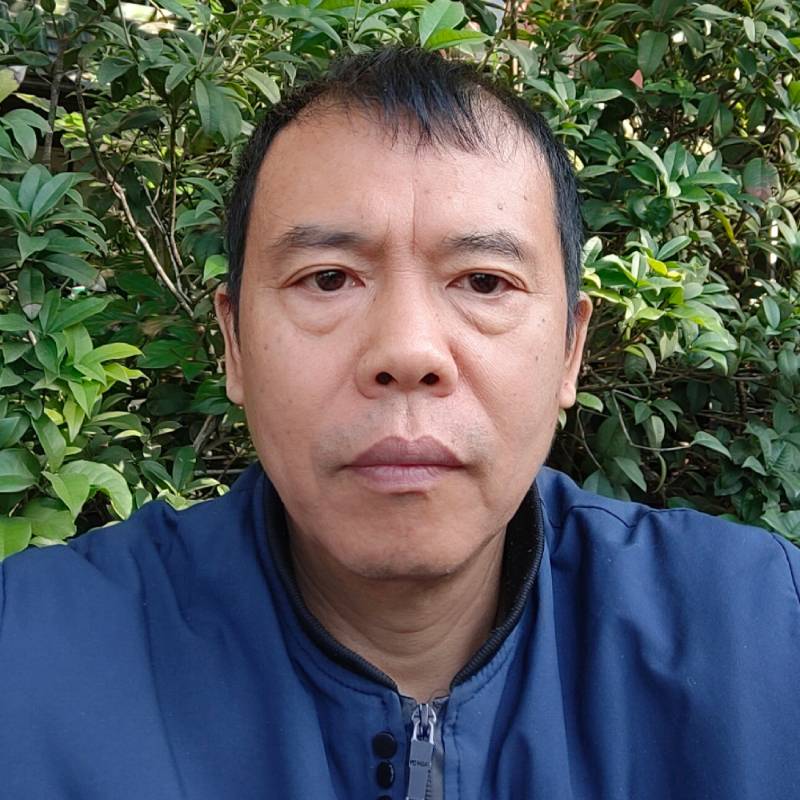
Professor WEN Xiujun
Professor in the College of Forestry and Landscape Architecture, South China Agricultural UniversitySession 2: Urban Forestry in the Greater Bay Area
The Technology and Cases of Urban Tree Management in South China City
2 March 2022 WednesdaySouth China often refers to the area south of Nanling Mountain. It's full of sufficient light, warm and humid and lush vegetation here. The city clusters of the Guangdong-Hong Kong-Macao Greater Bay Area are all in South China. A dynamic world-class city cluster, and a high-quality life circle suitable for living, work and travel will be built in the Greater Bay Area.
In this seminar, the experience and technical points of Guangzhou and other cities, urban tree management will be introduced and focused on the risk assessment, risk assessment of ancient and famous trees and rejuvenation management technology. Taking "Eight Road and One Island' street tree risk assessment" and other two cases to introduce the specific technical points.

Ms HUANG Songyi
School of Horticulture and Landscape Architecture, Zhongkai University of Agriculture and Engineering; Senior Engineer Professor; Expert in science communication of landscape architecture of Chinese Society of Landscape Architecture; and ISA Certified ArboristSession 2: Urban Forestry in the Greater Bay Area
Soil Properties in Relation to Tree Performance across Urban Green Space Types in Hong Kong
2 March 2022 WednesdayUrban green space (UGS), including urban parks, street trees, residential gardens, lawns and roof gardens are containers for greenery development, are significant in urban ecological system and sustainability. However, the qualities of UGS in Hong Kong are poor in general due to inadequate design and management. This study evaluated the tree performance in UGS, the physiochemical properties, soil metal contaminants, and soil microbial communities in the UGS of Hong Kong, and their interrelationships. The study area covered Hong Kong Island, Kowloon, and New Territories. Eight major UGS types (Grassland (Park). Level Planting Bed (Park), Remnant (Park), Tree Pit (Park), Planting Strip (Roadside), Level Planting Bed (Roadside), Tree Pit (Roadside) and Slope (Roadside)) were selected based on their function and locations. Five representative study sites Tsing Yi, Kowloon, Lok Fu, Hong Kong and Chai Wan were selected for conducting visual tree assessment and soil sampling. All soil samples were classified as sandy loam or loamy sand, with a high content of sand and relatively low silt and clay. The nutrient value in UGS was low. By comparing the soil nutrient among UGS types, the nutrient value of soils (N, P, K) in public parks was significantly lower than that in roadsides. Undetectable soil metal contaminants (Pb, Cu, Zn, Cd, and Ni) are found in the soil samples collected from UGS. The pH value of UGS mainly ranged between slightly acidic and slightly alkaline, and the soil conductivity of soil samples in public parks was significantly lower than that in roadsides. Furthermore, the soil compaction in UGS is obvious. A total of 49 out of 164 soil samples are determined as compacted. This study could help us to understand the current problems of UGS and propose potential solutions for the obstacles in a technical or manageable manner.
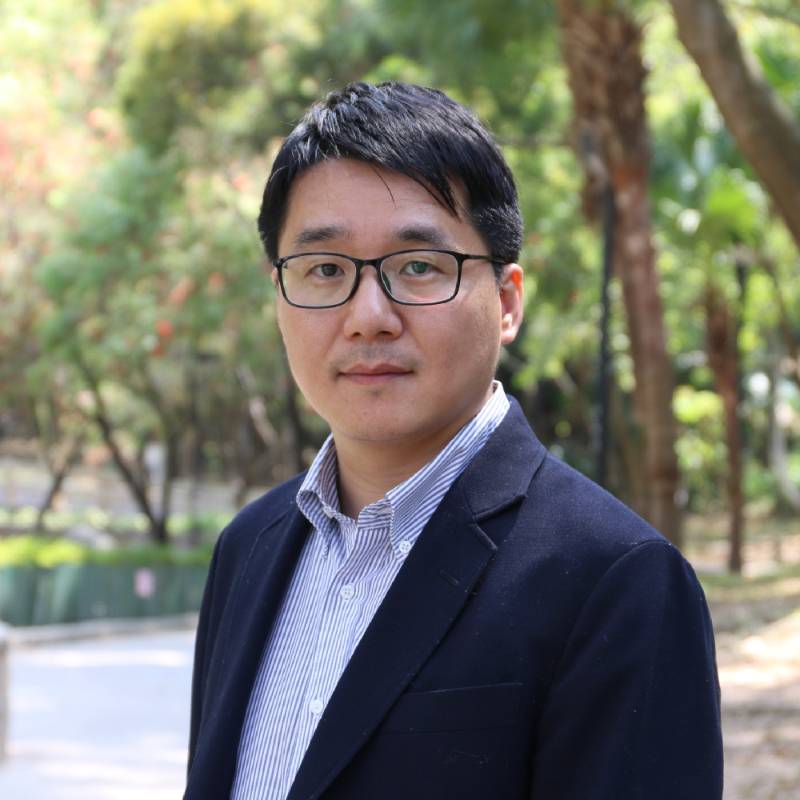
Dr ZHANG Hao, Allen
Associate Professor in the Faculty of Design and Environment, Technological and Higher Education Institute of Hong KongSession 2: Urban Forestry in the Greater Bay Area
Panel Discussion
2 March 2022 WednesdaySession 3: Landscape Design for Health and Well-being
Introduction
3 March 2022 ThursdaySession 3: Landscape Design for Health and Well-being
Case Study of Sup-Chiyu (Forest Therapy) Activities for Urban People in Korea
3 March 2022 ThursdaySeoul, which is the capital city of the Republic of Korea, is vulnerable to stress due to the rapid and dynamic urban expansion process. In the 1990s, Korea began the application of forest recreation as one of the forest management methods. In early 2000s, forest recreation activities with the purpose of improving health were specially defined and applied as forest healing. The purpose of this presentation is to look at an overview of Korea's forest therapy research and share the results of important researches.

Professor Bum-jin PARK
Professor in the Department of Environment and Forest Resources, Chungnam National UniversitySession 3: Landscape Design for Health and Well-being
Urban Landscape & Healthy City: Mechanisms and Research Questions regarding the Impacts of Urban Green Landscapes on Public Health and Well-being
3 March 2022 ThursdayThe study presents a summary of critical environmental problems in contemporary cities, especially major high-density cities, and the serious public health crisis resulting from those environmental problems. We explain five theoretical pathways through which urban natural landscape influences human health and well-being: promoting physical exercise, relieving stress, reducing mental fatigue, providing ecological products or services, and enhancing social capital. A theoretical framework connecting urban natural landscapes with health outcomes is established and a set of relevant empirical studies are presented.
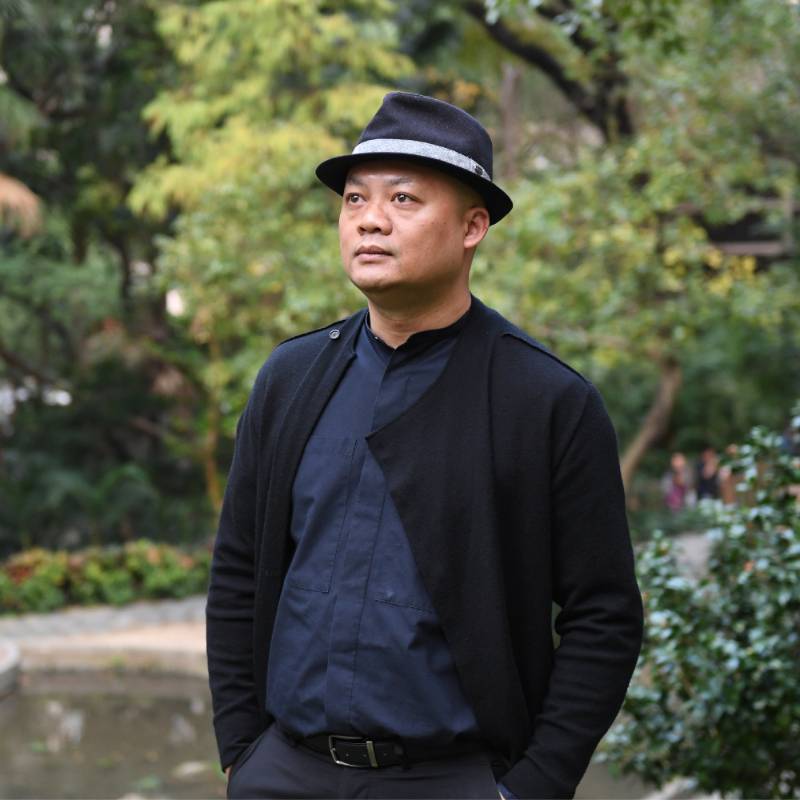
Dr JIANG Bin
Associate Professor in Landscape Architecture, University of Hong KongSession 3: Landscape Design for Health and Well-being
Revitalisation of Tai Wai Nullah: Creation of Blue Green Space for Close Contact with Nature in Urban Area
3 March 2022 ThursdayWith growing research on the positive influence of blue and green spaces to human well-being, there is an increase in awareness of the importance in providing spaces for people living in urban areas to connect with nature. Yet, in densely populated places like Hong Kong, creating new blue and green spaces within a walkable distance from living places is challenging. The concept of land co-use provides a great opportunity to solve the problem.
The Drainage Services Department has put this concept in practice by introducing new green spaces in drainage infrastructure, such as opening the green roof of the pump house of Happy Valley Stormwater Storage Scheme. We also put forward the concept of "Rivers in the City" to inject more blue and green spaces into the communities. Following the success of Kai Tai River, the first urban green river corridor in Hong Kong, we are currently revitalising two concrete drainage channels, King Yip Street Nullah and Jordan Valley Nullah, into green rivers.
To move one step further, we are designing to allow the public to enjoy revitalised rivers not just from the river banks but by walking into the river, immersing into the blue green space. Tai Wai Nullah will be the first revitalised drainage channel allowing public access in Hong Kong. This 2-km long drainage channel will be turned into zones for ecological enhancement, community back garden and recreation activities. A boardwalk will connect different zones of the river, allowing intimate contact with nature. While the public will be allowed to enjoy water-friendly activities, they will also be safeguarded by a sophisticated flood warning and safety system, which will take into account weather forecast information and real-time rain and water level data and provide alerts for the potential rise in the water level.

Ir Thomas H. L. WONG
Chief Engineer, Drainage Projects Division, Drainage Services DepartmentSession 3: Landscape Design for Health and Well-being
Panel Discussion
3 March 2022 ThursdaySession 3: Landscape Design for Health and Well-being
Break
3 March 2022 ThursdaySession 3: Landscape Design for Health and Well-being
Greening Blocks: Evidence-based Design Strategies to Integrate Health & Climate Resilience Co-benefits of Urban Greening
3 March 2022 ThursdayCities around the world are facing major challenges. Industrialised nations are experiencing epidemics of chronic diseases like diabetes, cardio-vascular disease and dementia and it would be all too easy to give up hope of finding solutions. But there is positive news. A growing body of research reveals that spending time outdoors in and around trees, parks and gardens can boost our physical and mental health and help prevent a wide range of diseases. And just as multiple short bursts of physical activity can have the same benefits as one long exercise session, micro-doses of nature throughout the day really add up. Studies across multiple decades outline the contributions of urban greening to improving human well-being and reducing urban heat, but we found little work was being done to translate research findings into practical interventions that communities can incorporate into their local environments. Our research team found a need for practical evidence-based solutions that can be used by the people responsible for managing our urban spaces, including local government, developers or managers of large institutional campuses. We have assembled a set of eight scalable evidence-based urban greening interventions designed to increase urban green exposure during a typical day. These include time spent indoors and traveling between buildings and casual time outdoors. These guidelines emphasise the use of city trees, as science shows that large scale vegetation offers the best benefits. These interventions can be used by anyone interested in improving quality of life at the community and neighbourhood scale.
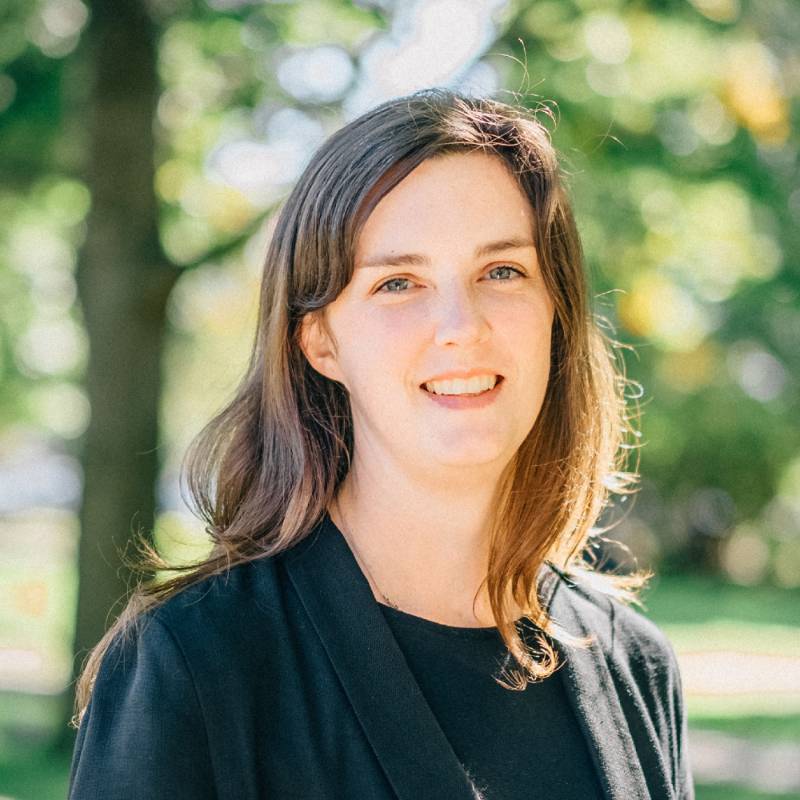
Dr Sara BARRON
Lecturer in Urban Forestry, University of British ColumbiaSession 3: Landscape Design for Health and Well-being
A Study on Stationary Behaviors in High-density Residential Estates in Hong Kong
3 March 2022 ThursdayThe presentation will be based on one of my research projects in Hong Kong, which focused on open spaces in public housing estates. Some patterns of stationary behaviours that are closely related to spatial configurations and landscape features in observed open spaces have been identified via spatial-temporal and statistical analyses. These findings will be shared with the audience, with discussions on their relationship with well-being of users. Hope these would support future landscape design.

Dr SHI Shulin
Assistant Professor in the Department of Landscape Architecture, Tsinghua UniversitySession 3: Landscape Design for Health and Well-being
The Future Urban Forest at Tung Chung New Town Extension, Hong Kong
3 March 2022 ThursdayTung Chung New Town Extension is one of the large-scale developments in Hong Kong for land and housing supply in the medium-term meeting housing, economic and social needs, while balancing between the conservation of the natural environment and sustainable new town development. During the planning and design stage, Civil Engineering and Development Department seized the opportunity to bring nature more connected to the new community by adopting the urban forestry strategy and blue green infrastructure in the landscape design. This urban forest will also be underpinned by a planned ecological network which intends to link up the wildlife habitats at Lantau North Country Park and Tung Chung Valley with green corridors. The ultimate goal is to create a resilient urban forest not just to combat climate change, enhance the biodiversity but also demonstrate a harmonious symbiosis relationship between human, fauna and flora for a more livable city.

Ms N.T. PONG
Senior Landscape Architect, Sustainable Lantau Office, Civil Engineering and Development DepartmentSession 3: Landscape Design for Health and Well-being
Panel Discussion
3 March 2022 ThursdaySession 3: Landscape Design for Health and Well-being
Noon Break
3 March 2022 ThursdaySession 4: Healthy Urban Forest
Science-based Soil Nutrition for Urban Trees
3 March 2022 ThursdayIncreasingly we recognize the importance of soil testing before prescribing use of fertilizers, but all soil tests are not created equally: agricultural soil metrics are not appropriate for use in landscapes. Moreover, we can correlate relevant soil test data with careful site observations to learn more about what constitutes sustainable levels of organic matter and nutrient levels. Learning how to interpret soil tests by ground-truthing with site conditions allows arborists and landscape managers to understand how rhizospheres are currently functioning and what, if anything, should be added. Furthermore, knowing the importance of a healthy soil biota encourages managers to use fewer bactericide and fungicides, which kill beneficial microbes.
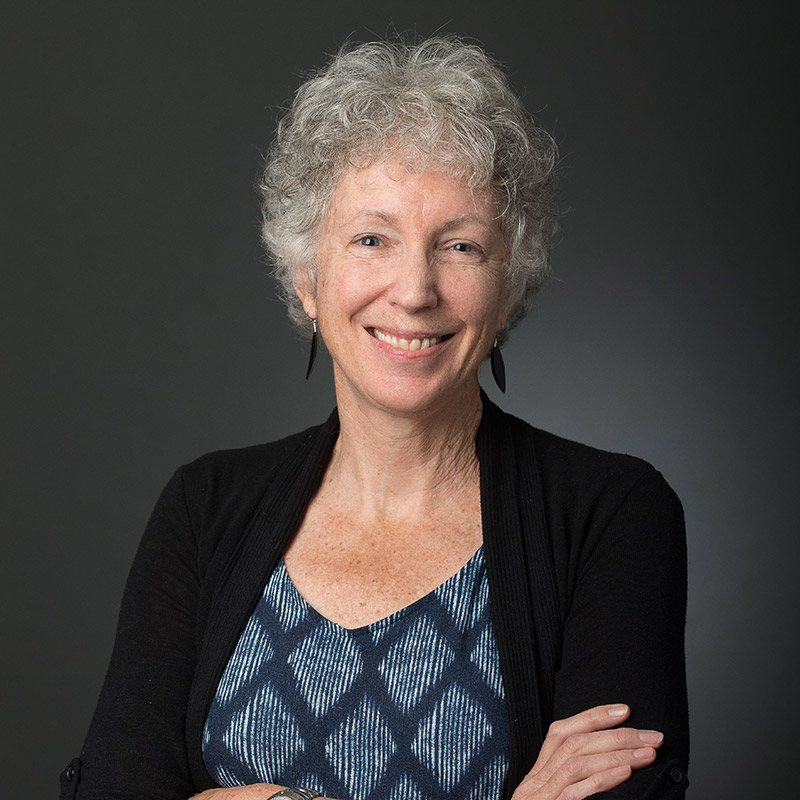
Dr Linda CHALKER-SCOTT
Extension Urban Horticulturist and Associate Professor in the Department of Horticulture, Washington State UniversitySession 4: Healthy Urban Forest
Principles and Methods of Plant Selection in Response to Climate Change for Landscaping and Urban Forestry
3 March 2022 ThursdayThe terminologies such as climate change, global warming, elevated CO2 concentration, the greenhouse effect, tropical cyclones, storm surge, rainstorm waterlogging, heat waves, drought, sea level rising, seawater intrusion appeared in various academic journals and public media. The meteorological disasters and extreme climate events are changing the composition of our atmosphere, the spatial distribution of hydrosphere, the geographic environment of lithosphere, the regional differentiation of pedosphere and the habitat evolution of biosphere. The natural geographical environment on which human beings rely for survival has fallen into an unprecedented fragile situation, which has also caused a series of unprecedented crises to the landscaping ecosystem and urban forestry. Facing the challenge, disciplines of landscape architecture and urban forestry need to enhance the ecological resistance of tree species and promote the sustainability of ecosystem services with its professional wisdom. On the basis of the macroscopic countermeasures, combed the growth, morphological, ecological, and physiological indicators for plant selection to landscaping and urban forestry, more than 500 species of landscape and urban forestry species for the cold resistance, heat resistance, drought resistance, waterlogging resistance, burning resistance, pest & disease resistance, wind resistance, salt resistance and barren resistance were quantitatively determined and multivariate analyzed. The principles of "right tree, right place" was put forward, and the technical methods for ecological safety and landscaping and urban forestry health were clarified in this presentation.
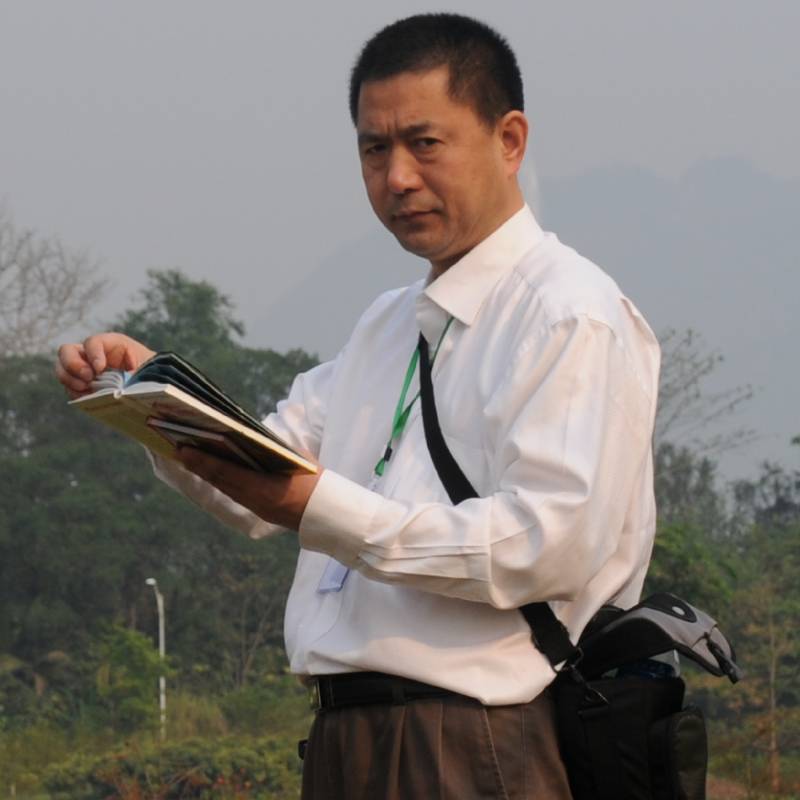
Professor ZHANG Deshun
Professor in the Department of Landscape Architecture, College of Architecture and Urban Planning, Tongji UniversitySession 4: Healthy Urban Forest
A New Fast Method to Assess Urban Trees' Growth Sensitivity in Response to Habitat Stress: A Case Study of Urban Trees under Drought Stress in Saxony, Germany
3 March 2022 ThursdayHow to quickly assess the growth response of diverse urban trees in different habitats is a challenge in urban tree management. Taking a case study in Saxony, Germany, Central Europe, our research focused on the assessment of the landscape trees' declining growth vitality and habitat adaptability under the frequent and intensive drought stress. The measurement of annual shoot lengths (ASL) of 24 tree species in diverse habitats was conducted, and the calculation of the relative ASL increase (RAI) was used to indicate trees' growth sensitivity in response to drought stress. The results showed that 1) Trees' ASLs were decreasing consistently with tree ages, and the early-young trees growing in the shaded forest and late-young trees in the open stands showed relatively higher ASL values than the middle-aged trees planted along the avenues. 2) The correlation between the ASL and the present-year as well as the previous-year standardised precipitation index was significantly strong (r2=0.687, p<0.01), Fraxinus excelsior and Quercus robur in the shaded forest, as well as F. excelsior and Q. robur in the open stand, were found to be non-sensitive to drought, but other 14 tree species were sensitive. 3) The mean and minimum values of the leaf water potential at turgor loss point significantly correlated with each other (r2=0.549,p<0.01), but did not correlate to growth sensitivity. 4) Xylem structure significantly correlated with RAI (r=0.553,p<0.01)and growth sensitivity(r=0.545, p<0.01), and the ASL performance of the ring-porous species was better than semi-ring-porous species and diffuse-porous species. Our work concluded that the responses of tree shoot growth to drought stress were affected by multiple interior and external factors, and strongly depended on species- and site-specific characteristics, such as age phases, microhabitats, grafting effect, and competition. Finally, the ASL measurement was recommended to be an easy, fast and effective method to assess tree growth vitality and adaptability response to their habitats, this method was also helpful to select urban tree species with high tolerance in the urban green space.
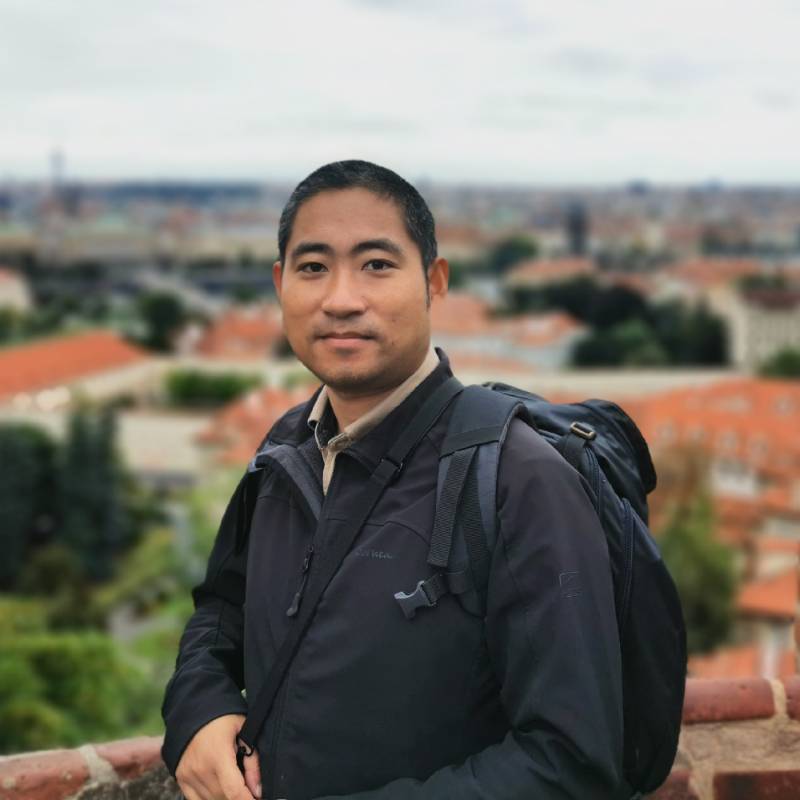
Dr LIU Ming
Postdoctoral Researcher at the Technical University of DresdenSession 4: Healthy Urban Forest
Panel Discussion
3 March 2022 ThursdaySession 4: Healthy Urban Forest
Break
3 March 2022 ThursdaySession 4: Healthy Urban Forest
When the Biological and Physical Clash, Mash and Trash - or How Healthy Soil is (un)Made
3 March 2022 ThursdaySoil can take several hundreds of years to form, and is a product of physical, biological and chemical mechanisms. Although chemical processes have been much studied, we are only just starting to understand how physical interactions between soil, and the organisms it contains, alter soil-forming processes. Through soil wetting and drying processes (that ‘clash' soil particles together physically), micro-aggregation occurs. The feeding of microorganisms and fauna on root exudates and litter (‘mashing' of plant substrate) leads to secretions (‘trashing') that help bind soil particles together and form macro-aggregates. Microbial secretion is also a major mechanism contributing to carbon sequestration in soil. As roots and fauna move through soil, they create stable pathways for microorganisms, improving biotic interactions. The removal of vegetation reduces the availability of substrates to soil biota, and if not replaced, can cause the collapse of this biotic network, leading to aggregate breakdown by erosive physical forces such as rain. Choosing suitable plant species can improve the entire ‘clash-mash-trash' process. In particular, nitrogen-fixing legumes with dense, fibrous root systems are able to provide several functions; from hosting symbiotic bacteria that improve soil nitrogen and carbon content, to improving soil structure by creating stable channels for biotic fluxes. Information is useful for land managers aiming to improve soil degradation and conservation, as well as creating a healthy and multi-functional soil in urban environments.

Dr Alexia STOKES
Senior Researcher of National Research Institute for Agriculture, Food and Environment (INRAE)Session 4: Healthy Urban Forest
Green Barriers to Reduce Pollution: Results of a Long-Term Experiment
3 March 2022 ThursdayThe project, started in 2014, aims to study the effect of different species of evergreen shrubs on the dynamics of deposition of some heavy metals deposition and of three different fractions of particulate matter, deriving from vehicular traffic during the different seasons and also to test the effects of different plant arrangement (planting density, distance from the road verge), different species, and pruning intensity.
The experimentation is carried out in the North-West part of Tuscany (Italy), on a highly traffic-intensive four-lane road. Particulate matter deposition (PMx) was measured in an area occupied by a green barrier and an adjacent lawn several times during the year.
The PMx depositions on the passive samplers were analyzed under the microscope through photographs in order to determine the percentage of coverage by PMx on the surface of the filters. In addition, various atmospheric parameters including relative humidity, rain, wind and temperature were monitored throughout the experimentation period. The deposition of some heavy metals was also detected.
The study has confirmed some of the results obtained with previous research and by other authors, regarding the capacity of different species to intercept fine particles, coming from pollution sources such as traffic, but provided further information about the best barrier conformation in terms of species and also about planting density and pruning.
As hypothesized, PMx depositions have a close correlation with meteorological conditions and that the black particulate, of anthropogenic origin, is greater than the brown (coming from various sources such as soil, dust raised by the wind), given the close proximity to the road.
The research, still running, has shown that, in addition to the choice of species, a significant importance in reducing pollution is also covered by the arrangement of plants and their management (e.g. pruning).
A second experiment, still in progress, was set up to test different methodologies to quantify PMx (1. image processing based on microscopic analysis and 2. filtration procedure). The experimentation began on a number of 40 tree and shrub species. Of these 18 were selected based on the accumulation of PMx and a significant correlation between the methodologies. These species will be used to map the accumulation of PMx following exposure to various sources of pollution.
The information provided by these experiments will be useful for planning green barriers aimed at reducing pollution, but also for selecting tree species with better performances in reducing dust concentration in the air.

Professor Francesco FERRINI
Full Professor in the Department of Agriculture, Food, Environment and Forestry, University of FlorenceSession 4: Healthy Urban Forest
Closing Remarks
3 March 2022 ThursdaySpeakers

Technical Officer of Urban Health Equity, World Health Organisation European Centre for Environment and Health

Teresa Heinz Professor of Sustainable Communities in the Department of Urban and Environmental Planning, School of Architecture, University of Virginia

Professor of Landscape Architecture, Peking University
Founder and
Principal Designer of Turenscape

Associate Professor in the Department of Geography, University of Hong Kong

Full Professor in the Department of Agriculture, Food, Environment and Forestry, University of Florence

Lecturer in Urban Forestry, University of British Columbia

Extension Urban Horticulturist and Associate Professor in the Department of Horticulture, Washington State University
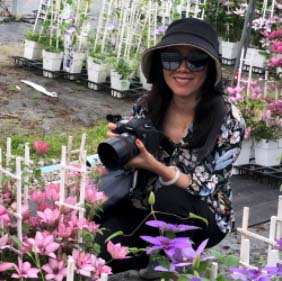
Fairy Lake Botanical Garden, Shenzhen & Chinese Academy of Sciences

School of Horticulture and Landscape Architecture, Zhongkai University of Agriculture and Engineering; Senior Engineer Professor; Expert in science communication of landscape architecture of Chinese Society of Landscape Architecture; and ISA Certified Arborist

Associate Professor in Landscape Architecture, University of Hong Kong

Associate Professor in the Department of Civil and Environmental Engineering, Hong Kong University of Science and Technology
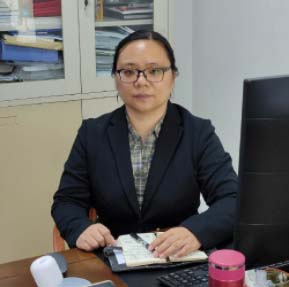
Guangzhou Institute of Forestry and Landscape Architecture

Postdoctoral Researcher at the Technical University of Dresden

Professor in the Department of Environment and Forest Resources, Chungnam National University

Senior Landscape Architect, Sustainable Lantau Office, Civil Engineering and Development Department

Assistant Professor in the Department of Landscape Architecture, Tsinghua University

Senior Researcher of National Research Institute for Agriculture, Food and Environment (INRAE)

Executive Deputy Director of the Urban Forest Research Centre of the State Forestry and Chief Specialist at the Research Institute of Forestry Chinese Academy of Forestry

Professor in the College of Forestry and Landscape Architecture, South China Agricultural University

Chief Engineer, Drainage Projects Division, Drainage Services Department

Chief Landscape Architect in Shenzhen Beilinyuan Landscape and Construction Planning Design Institute Co. Ltd.

Professor in the Department of Landscape Architecture, College of Architecture and Urban Planning, Tongji University

Associate Professor in the Faculty of Design and Environment, Technological and Higher Education Institute of Hong Kong



Mr Matthias BRAUBACH
Technical Officer of Urban Health Equity, World Health Organisation European Centre for Environment and Health
Professor Timothy BEATLEY
Teresa Heinz Professor of Sustainable Communities in the Department of Urban and Environmental Planning, School of Architecture, University of Virginia
Professor YU Kong-jian
Professor of Landscape Architecture, Peking UniversityFounder and Principal Designer of Turenscape

Dr Wendy Y CHEN
Associate Professor in the Department of Geography, University of Hong KongShe currently serves as the Editor-in-Chief for Urban Forestry & Urban Greening, a top international journal in the field of urban greening design and management. She is the Deputy Coordinator for the Urban Forestry Unit under the International Union of Forest Research Organisations, and the Executive Board Member of Urban Forest Division, Chinese Society of Forestry.
Chen's research focuses on urban forestry, urban river restoration, environmental externality of urban planning and urban landscape design, urban environmental governance and environmental policies, as well as urban sustainability.

Professor Francesco FERRINI
Full Professor in the Department of Agriculture, Food, Environment and Forestry, University of FlorenceFrom 1990 he has published more than 340 scientific and technical papers in Italian and English in international referred and nationwide journals (102 indexed in Scopus, IF 26; 265 indexed in Google Scholar, IF 32). He has given more than 200 talks in several international and national congresses. In 2009 he was the recipient of the Fabio Rizzi Award for his constant commitment in the research and extension service in the field of Plant Nursery Science and of Urban Arboriculture and for his continuous activity with researchers and contractors all over the world. In 2010 he was the recipient of International L.C. Chadwick Award for Arboricultural Research Recipient: The L.C. Chadwick Award is granted to individuals to recognise research that has contributed valuable information to arboriculture.
In 2019 he received the Award of Merit, the highest honour bestowed by the International Society of Arboriculture, which recognises a career of outstanding, meritorious service in advancing the principles, ideals, and practice of arboriculture. Since 2010 he has had a role as a scientific consulting expert for the Ministry of the University and Research of Italy for the project related to the Agri-Food sector. In 2016 he was part of the ERANET LAC (Latin-American Caribbean Countries) Scientific Expert Committee for topic 1: Ecosystem-based adaptation and resilience.

Dr Sara BARRON
Lecturer in Urban Forestry, University of British Columbia
Dr Linda CHALKER-SCOTT
Extension Urban Horticulturist and Associate Professor in the Department of Horticulture, Washington State UniversityLinda is also the award-winning author of five books: the horticultural myth-busting The Informed Gardener (2008) and The Informed Gardener Blooms Again (2010) from the University of Washington Press and Sustainable Landscapes and Gardens: Good Science – Practical Application (2009) from GFG Publishing, Inc., and How Plants Work: The Science Behind the Amazing Things Plants Do from Timber Press (2015). Her latest book is an update of Art Kruckeberg's Gardening with Native Plants of the Pacific Northwest from UW Press (2019), which has won several national awards since its publication.
In 2018 Linda was featured in a video series – The Science of Gardening – produced by The Great Courses. She also is one of the Garden Professors – a group of academic colleagues who educate and entertain through their blog and Facebook pages. Linda's educational contributions to science-based information have been recognized by such groups as Garden Communicators International, the National Association of County Agricultural Agents, and the International Association for Arboriculture.

Dr DONG Hui
Fairy Lake Botanical Garden, Shenzhen & Chinese Academy of SciencesWith professional expertise in both agricultural insect and pest control, Dr DONG has long been engaged in pest and disease control for gardens and botanical gardens, as well as research on urban biodiversity. Since the beginning of her research career, she has led 9 completed R&D programmes (6 of which on provincial level), published 22 research papers (13 of which with SCI) and 6 books (3 of which sponsored by national publishing funds), and discovered 48 new insect species. Dr DONG has also been actively promoting popular science education utilising resources in society, with a view to developing young people's scientific literacy. Her work takes various forms, including talks, exhibitions, field studies, etc. such as "International Butterfly Counting Day", "Zhu Meng Xian Hu" Youth Research and Education Summer Camp, "Bees and the Urban Environment", as well as other science promotion activities. She was awarded the title of "Outstanding Engineer" at the first Outstanding Technological Talent Award for Shenzhen Engineers in December 2020, and received a second class Shenzhen Scientific and Technological Progress Award in December 2019, and the IBC Contribution Award from the Botanical Society of China in 2018.

Ms HUANG Songyi
School of Horticulture and Landscape Architecture, Zhongkai University of Agriculture and Engineering; Senior Engineer Professor; Expert in science communication of landscape architecture of Chinese Society of Landscape Architecture; and ISA Certified Arborist
Dr JIANG Bin
Associate Professor in Landscape Architecture, University of Hong KongJiang's research has been supported by GRF, NSF, and many other national and local grants. Jiang ranks as the 49th most cited scholar in the field of Landscape Architecture on Google Scholar. He has published more than 32 journal articles in influential peer-reviewed journals, 31 proceedings in international conferences, and one book as a solo editor by Springer. His work has significantly impacted governmental and professional institutions, such as the World Health Organization, USA Forest Service, American Society of Landscape Architects (ASLA). His work has been reported by major global news sources, such as New York Times, Mail Online, Telegraph, Medical Xpress, and Daily Mail.
In addition, he has delivered nine keynote speeches, eight plenary lectures, and 20 other invited speeches since 2013. Jiang serves as a chair of the Research and Methods Track, Conference of the Council of Educators in Landscape Architecture (USA). He is a fellow of the China Society for Urban Studies and a consultant expert for many governmental and professional organizations. Jiang also serves on the editorial boards of academic journals.
Dr Jiang has more than fifteen years' experience in design practice. He worked for Turenscape (Beijing), EADG (Shanghai), and Peter Walker & Partners (PWP, California). He initiated a landscape empowerment project in South China and the work has been presented in YiXi, a prestigious public lecture forum. The book Landscape Empowerment has been published by Springer Nature in 2021.

Dr Anthony LEUNG Kwan
Associate Professor in the Department of Civil and Environmental Engineering, Hong Kong University of Science and Technology
Dr LI Zhiqi
Guangzhou Institute of Forestry and Landscape ArchitectureMs LI mainly engages in assessment on functions of urban ecosystem services, eco-monitoring, as well as scientific research and technical services regarding biodiversity conservation, etc., with substantial practical experience in forestry and landscape information construction. She has led or taken part in over 20 scientific studies or programmes on provincial or municipal levels. She has also led and taken part in compiling 5 sets of standard specifications. She has published over 20 papers, co-edited 1 book, applied for 3 patents and 5 copyrights of software programs. She participated in creating platforms such as Guangzhou Municipal Key Laboratory of Landscape Architecture, Guangdong Research Center of Urban Landscape Engineering Techniques, Guangzhou Urban Green Space Monitoring Station, Guangzhou National Field Station for Scientific Observation and Research of Urban Ecosystem, Guangdong, etc. Currently, Ms LI is leading projects such as the "Monitoring, Analysis and Study of the Ecosystem Efficacy of Guangzhou's Urban Forest", taking part in the "Research on Urban Forest Key Technologies in Response to Green Urbanisation in China and Europe" (2021YFE0193200), which is a specialised key project of inter-governmental and international cooperation in technology and innovation under the National Key Research and Development Programme.

Dr LIU Ming
Postdoctoral Researcher at the Technical University of Dresden
Professor Bum-jin PARK
Professor in the Department of Environment and Forest Resources, Chungnam National University
Ms N.T. PONG
Senior Landscape Architect, Sustainable Lantau Office, Civil Engineering and Development Department
Dr SHI Shulin
Assistant Professor in the Department of Landscape Architecture, Tsinghua UniversityDr Shi's research mainly focuses on well-being promoting landscape planning and design, evidence-based design, and post-occupancy evaluation. She is the Committee member of Health-Promoting Landscape and Horticultural Therapy Committee, Theory and History Committee under Chinese Society of Landscape Architecture; Member of Flower Landscape Branch of China Flower Association; Deputy Director of Green Therapy and Health-Promoting Landscape Research Center at School of Architecture, Tsinghua University. Dr Shi is experienced in research and education. She has published nearly 20 research articles in Chinese core journals, English SSCI/SCI journals, and high-end academic conferences in China and abroad, as first or corresponding author. Besides, Dr Shi has also hosted and participated in a number of research and practice projects, and instructed student projects to succeed in competitions.

Dr Alexia STOKES
Senior Researcher of National Research Institute for Agriculture, Food and Environment (INRAE)
Professor WANG Cheng
Executive Deputy Director of the Urban Forest Research Centre of the State Forestry and Chief Specialist at the Research Institute of Forestry Chinese Academy of ForestryDr WANG has long been engaged in scientific research in urban forestry and landscape ecology. He has launched creative research and practice with guiding value in areas including theories of construction of forest cities in China, development planning for forest cities, prevention of plant-caused pollution in urban area, and biodiversity of urban forest. Under Dr WANG's guidance, more than 50 scientific research topics on urban forestry have been completed, and forest city planning has been done for over 60 cities including Beijing, Guangzhou, Shenzhen and Xiamen. Also, he led the compilation of major planning such as the "National Forest City Development Plan 2018-2025", "Beijing Forest City Development Plan 2018-2035", "Xiong'an Forest City Construction Specialised Plan", and "Fuzhou City Binhai New Town Forest City Construction Master Plan 2017-2030". In addition, he presided over the compilation of "National Forest City Evaluation Indicators" – a set of national standards.
Dr WANG has published over 100 academic articles and is the recipient of seven national and provincial awards including a second class State Scientific and Technological Progress Award and a first class LIANG Xi Forestry Science and Technology Award. He was named "Outstanding Youth of the Central State Organs" in 2007, and received the award of "Advanced Individual with Outstanding Contributions to National Ecological Construction" in 2016. Currently, he is leading projects including "Construction Planning for the Beijing, Tianjin, Hebei Forest City Cluster" and "Functions and Dynamic Changes of the Ecosystem Services of our Country's Urban Forests", and "Research on Urban Forest Key Technologies in Response to Green Urbanisation in China and Europe", which is a specialised key project of inter-governmental and international cooperation in technology and innovation under the National Key Research and Development Programme (2021YFE0193200)".

Professor WEN Xiujun
Professor in the College of Forestry and Landscape Architecture, South China Agricultural University
Ir Thomas H. L. WONG
Chief Engineer, Drainage Projects Division, Drainage Services Department
Professor XIAO Jieshu
Chief Landscape Architect in Shenzhen Beilinyuan Landscape and Construction Planning Design Institute Co. Ltd.She has undertaken research on the impact of typhoons on landscape trees. Her thesis "Research on the Typhoon-resistant Ability of Landscape Trees in South China" has won the second prize in the thesis competition organised by the Guangdong Society of Landscape Architecture and has been published in the dual core professional journal "Chinese Landscape Architecture". In 2019, she delivered the report on "Exploration of Factors Affecting the Typhoon-resistant Ability of Landscape Trees" at the Seminar on Prevention of Typhoon Damages to the Landscape & Greening Industry in Guangdong, Hong Kong and Macau.
Other achievements: mainly participated in the "Evaluation of the Use of Ornamental Plants in the Living Environment, and Research and Demonstration of the High-efficacy Greening Configuration Technology", which is a key topic in science and technology to be tackled at the national level, to provide a scientific and objective basis for landscaping that is conducive to the creation of a healthy living environment; worked as the first associate editor in the fifth volume of the Illustrated Landscape Construction Drawings Series – Planting Design, which is the first illustrated book of construction drawings featuring planting design in China, and has been awarded the second prize of scientific progress by the Chinese Society of Landscape Architecture; co-edited the Design Specifications for Zoo, which has made up for the deficiency in this aspect in our country. More than 20 of the projects she has substantially participated in have received national awards. Her representative work includes: Shenzhen Bay Park, Shenzhen City Soil and Water Conservation Demonstration Park, Dapeng National Geopark, Huaqiao City Wetland Park, Futian Mangrove Park, etc. In particular, Shenzhen Bay Park and Shenzhen City Soil and Water Conservation Demonstration Park won the 9th International Federation of Landscape Architects' Award of Excellence in the Landscape Design Category and the President's Award in the Landscape Management Category (the highest award in this category) respectively.

Professor ZHANG Deshun
Professor in the Department of Landscape Architecture, College of Architecture and Urban Planning, Tongji UniversityMain research focuses on: landscape plants and applications, ecological and planting design, landscaping planning in response to climate change, regulation planning of landscape microclimate, scenic tourism area planning, urban ecological infrastructure planning, etc. has published more than 300 papers in journals, 6 monographs. He has chaired 1 international cooperation research project, 3 projects of China National Natural Science Foundation. The main projects of the design studio are Jinan Botanical Garden and Red-leaf Valley Ecological and Cultural Tourism area, Shandong Province; Sanya Nanshan Buddhist Culture Zone, Hainan Province; Pinger Port Control Detailed planning, Guangxi Zhuang Autonomous Region, etc.

Dr ZHANG Hao, Allen
Associate Professor in the Faculty of Design and Environment, Technological and Higher Education Institute of Hong KongDr Zhang is recognised as a leading researcher in urban forestry and urban greening. He was invited by international top journals, such as Landscape and Urban Planning, Urban Forestry and Urban Greening, to be a reviewer. He has successfully submitted 13 research grant applications in the past five years, with a total awarded amount of over HK$20,000,000. He has published over 35 scientific papers and books and has accumulated more than 10 years of teaching and research experience, in both the conceptual and applied domains.
In Academic Year 2019/20, Dr Zhang won the Researcher Award in THEi Staff Awards in recognition of his significant achievements in applied research. Dr ZHANG's current research in THEi focuses on the Urban Horticulture, Urban Forestry and Urban Greening, Landscape Ecology and Restoration Ecology.
Dr Zhang is proactively involved in community services. He was invited as a keynote speaker by different organisations in different public seminars, such as the Leisure and Cultural Services Department, the Agriculture, Fisheries and Conservation Department, the Tree Management Office and the University of Hong Kong (HKU), to promote urban tree conservation and management. These public seminars have an impact on the increase of public awareness of urban tree management.
Prior to joining THEi, Dr Zhang was a postdoctoral fellow at the Department of Geography, HKU. His research project at HKU mainly focused on urban tree management. Dr ZHANG obtained his PhD from the Chinese University of Hong Kong (CUHK).
Technical Sessions
In light of the latest COVID-19 development, the Technical Sessions on 4 March 2022 will be postponed as the safety of participants and staff must always come first. Details on further arrangement will be announced in due course.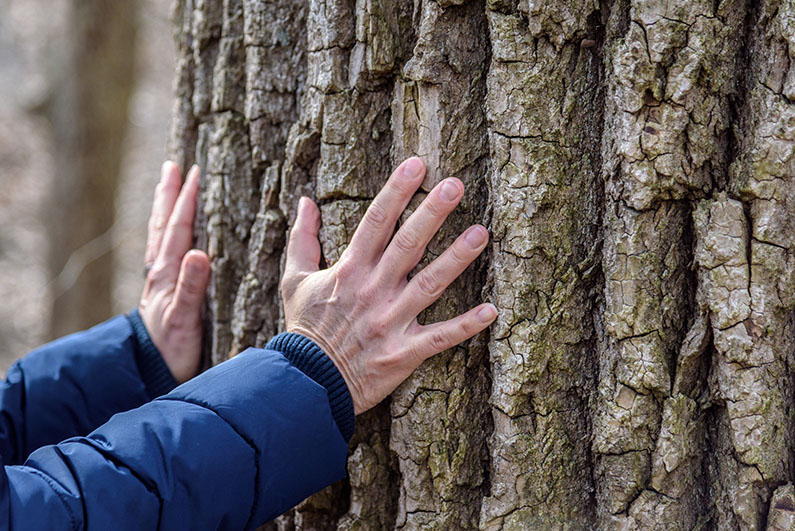
Forest-bathing, or "Shinrin-yoku", means taking in the forest through our senses. This is not exercise, or hiking, or jogging. It is simply being in nature, connecting with it through our senses of sight, hearing, taste, smell and touch. Shinrin-yoku is like a bridge. By opening our senses, it bridges the gap between us and the natural world. Join this 45-minute forest-bathing to experience nature with our five senses with our professional guidance.
9:00am (Two groups, 12 people each)
10:00am (Two groups, 12 people each)
11:00am (Two groups, 12 people each)
Duration for each session
45 minutes
Quota
72 (For local residents only. Selection will be made by drawing lots at oversubscription)
Language
Cantonese
Venue
Kowloon Park: 22 Austin Road, Tsim Sha Tsui, Kowloon
(Accessible from Nathan Road, Haiphong Road, Austin Road and China Hong Kong City)
Fee
Free admission
Registration is now closed
Guidance Notes and Rules
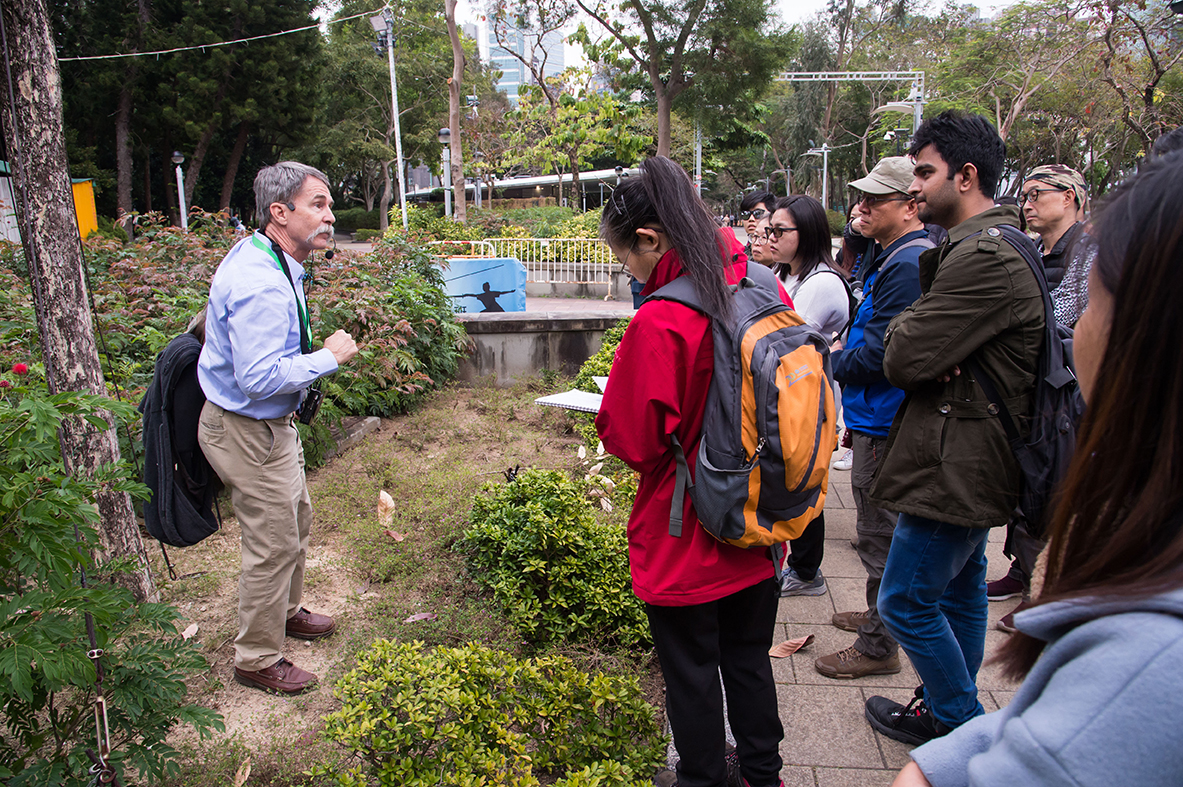
In this technical session, our local tree expert will give a guided tour on urban tree care, share interesting tree stories and some basic knowledge about visual tree inspections. Do not miss this chance to appreciate the magnificent trees in our urban park, and learn about the characteristics and functions of trees.
9:00am (Two groups, 20 people each)
10:30am (Two groups, 20 people each)
Duration for each session
Around 1 hour and 30 minutes
Quota
80 (For local residents only. Selection will be made by drawing lots at oversubscription)
Language
English or Cantonese
Venue
Kowloon Park: 22 Austin Road, Tsim Sha Tsui, Kowloon
(Accessible from Nathan Road, Haiphong Road, Austin Road and China Hong Kong City)
Fee
Free admission
Registration is now closed
Guidance Notes and Rules
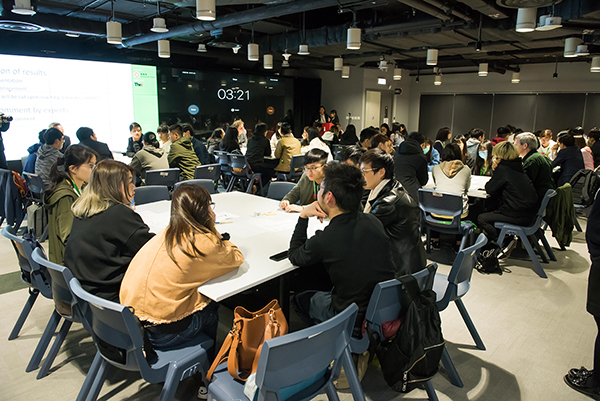
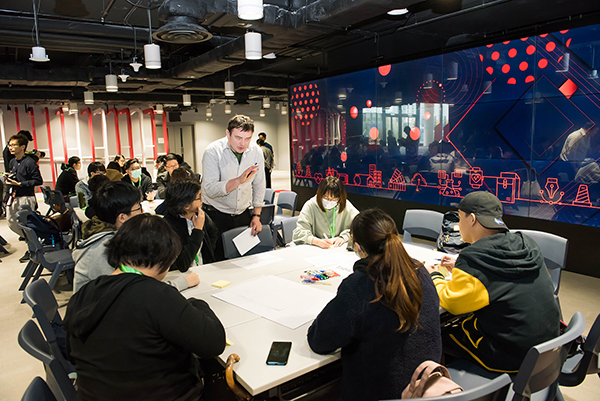
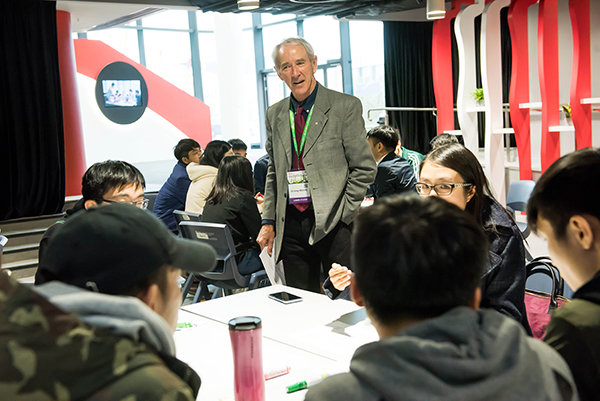
In order to encourage youngsters to join the landscape architecture, arboriculture and horticulture industry, uplift the professional standards of industry practitioners and strengthen public awareness on proper tree care, technical sessions for student and trainee will be provided for knowledge exchange on the topics of urban forestry and well-being with local experts in the field.
This technical exchange is only open to relevant students and trainees.
- Participants should ensure that their health conditions are good on the date of technical sessions. If there is any discomfort, it is not recommended to participate in the technical sessions.
- For the sake of safety, staff of the Development Bureau (DEVB) may reject anyone whose health conditions are considered unsuitable for participation and those who have symptoms of infectious diseases from participating in the technical sessions.
- Our staff will measure the body temperature of the participants at the assembly point. If the body temperature of a participant is higher than 37.5°C, our staff will terminate his/her participation in the technical sessions.
- All participants should arrive at the assemble point at least 10 minutes in advance.
- Please wear clothing suitable for being outdoors and sports shoes. You may bring water, insect repellent, sunscreen and umbrella.
- No food during the activity.
- Participants should follow our staff's instructions. You should not deliberately damage the park's facilities, violate the park's rules nor endangering oneself or others.
- A maximum of 4 participants is allowed in a group according to the current prohibition on group gathering. Participants should comply with all the anti-epidemic measures of COVID-19 set out by the Government throughout the technical sessions.
- All participants will be required to keep their masks on for the entire duration of the technical sessions. Please follow our staff's instructions in maintaining social distance.
- Participants should pay attention to their own safety and take care of their personal belongings during the visit. DEVB will not be responsible for any loss or damage.
- DEVB is exempted from all the liabilities of claims, costs, damages and expenses in respect of any damage, injury or loss to the participants or their properties occasioned by or in any way arising from the technical sessions or any purpose pertaining to or associated with the technical sessions.
- In view of the latest development of COVID-19, DEVB may downsize, postpone or cancel any technical sessions with very short notice period.
- If the Observatory issues Typhoon Signal No.3 or above, Amber Rainstorm warning or above, or Thunderstorm warning within two hours before the activity, the activity will be cancelled.
- If the Observatory forecasts that there will be heavy rain or other bad weather conditions in the activity area within two hours before the activity, the activity might be cancelled. Our staff will notify all participants on the activity arrangement as soon as possible.
- In the event of changing weather conditions during an activity, our staff will evaluate actual weather conditions, and may decide to stop an activity and arrange for participants to seek shelter at a safe location.
- DEVB may record the activity with photos, videos or voice recordings for promotion or education purpose on online or offline media.
- DEVB reserves its right to alter, delete or add on to any or all of the above terms and conditions without prior notification.
- In case of any disputes, the right of interpretation and decision lies with the DEVB.
Media
Press
Photo Gallery


